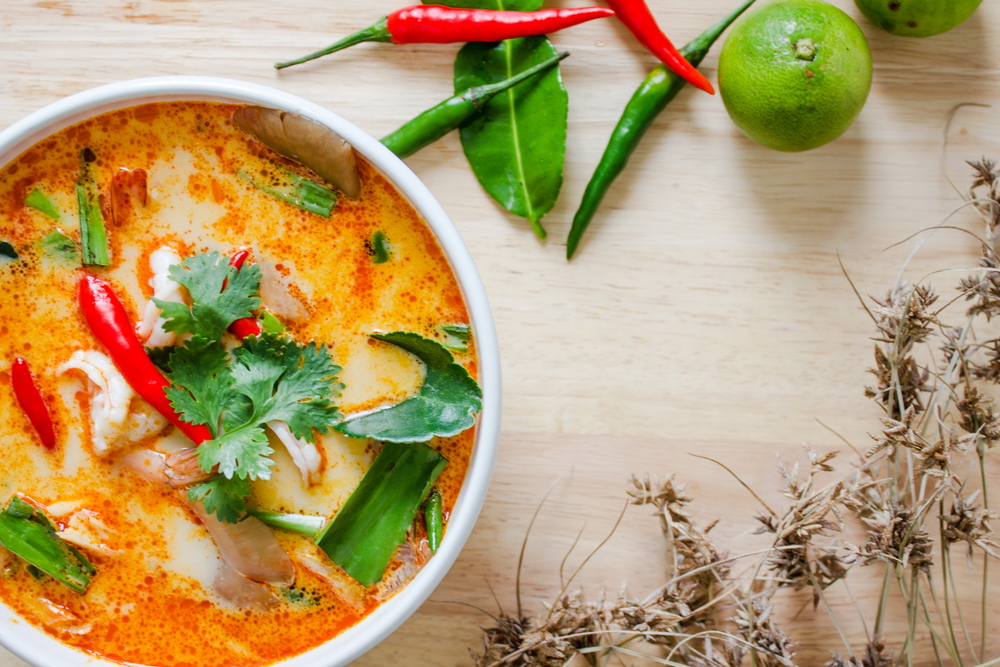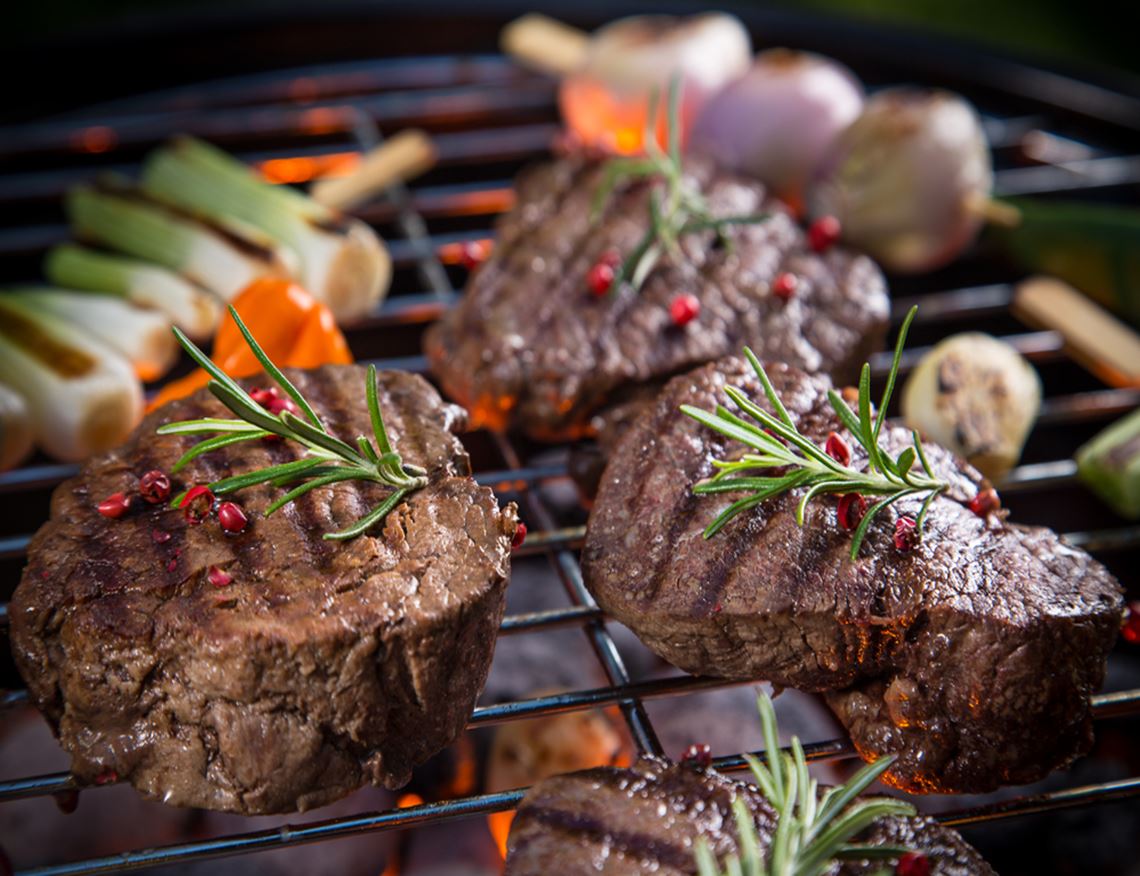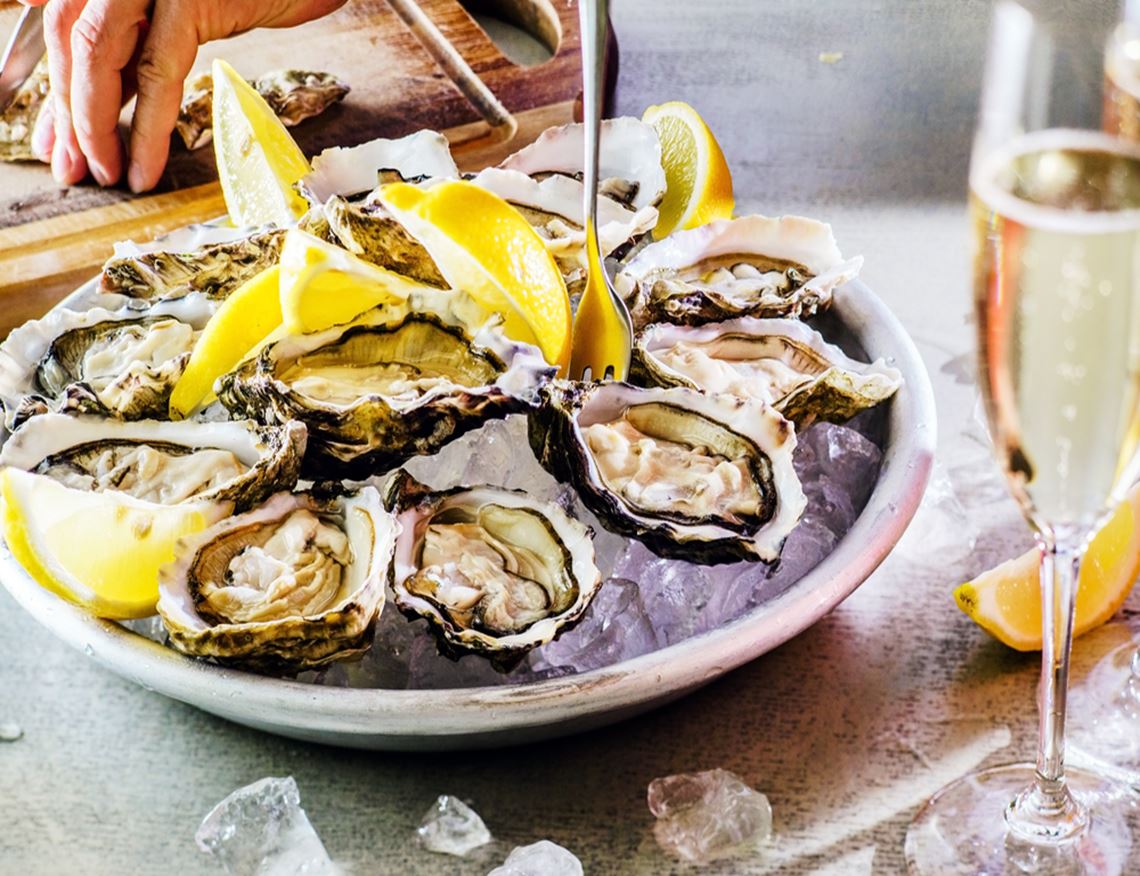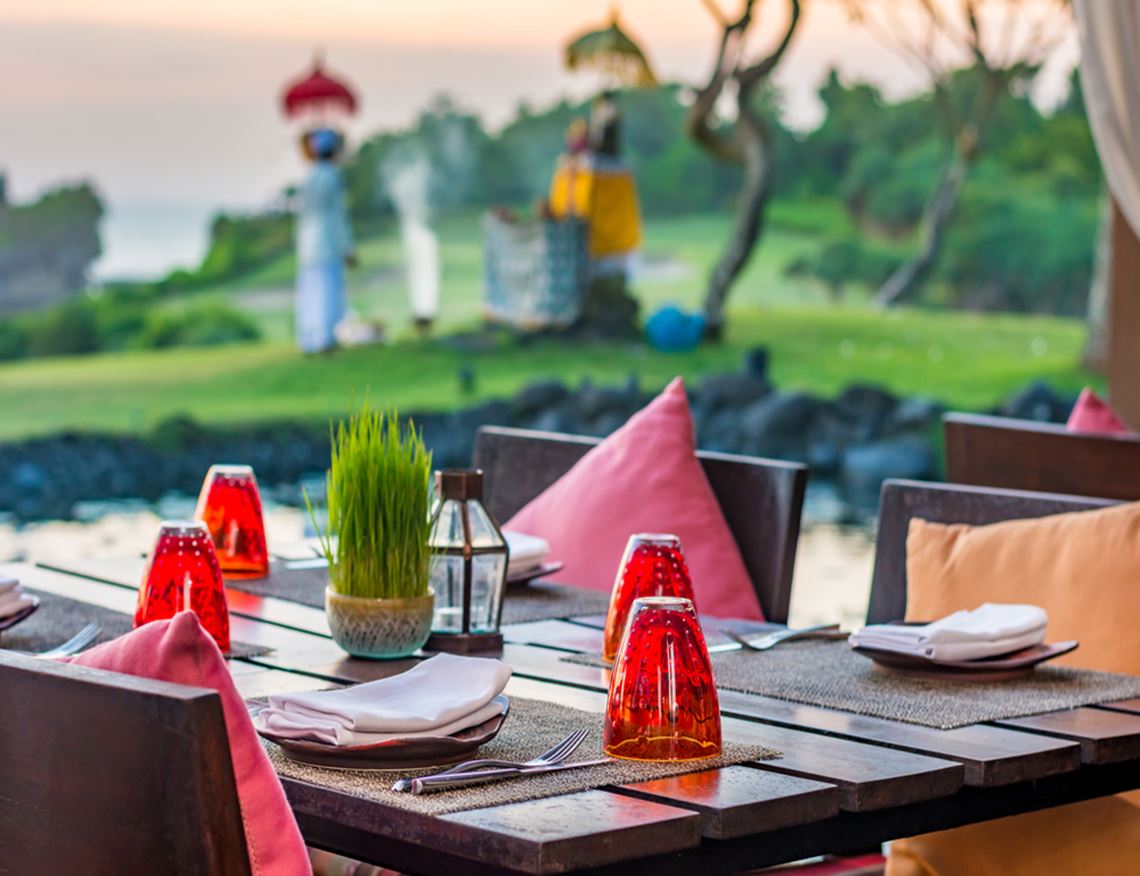Thailand’s finest rice dishes
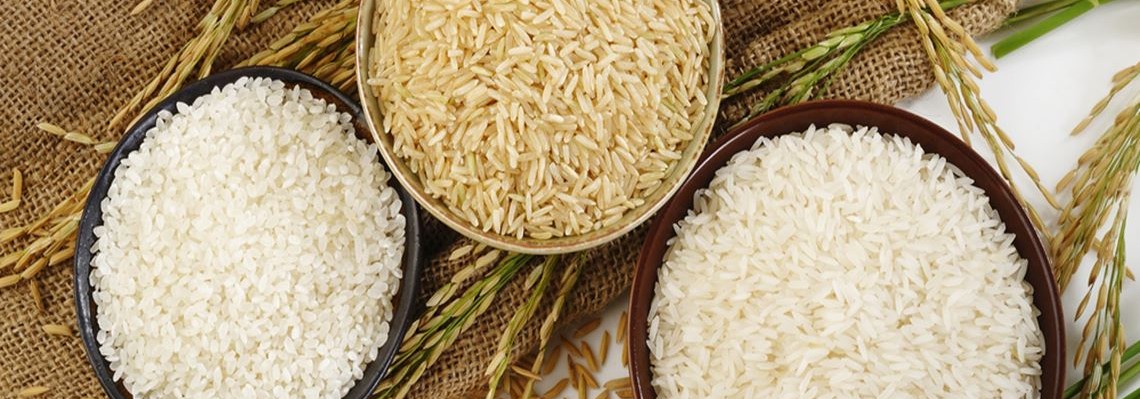

Khao pad goong is a satisfying lunch
While spicy curries and zesty soups may be amongst the first dishes that spring to mind when you list your favourite Thai dishes, the Kingdom also boasts a mouth-watering array of rice dishes that are well worth trying.
It’d be a mistake to think of rice purely as a side dish to accompany your main course, as this staple food can be prepared in a delectable range of dishes that form the main feature of the meal.
Some of the best places to sample an authentically prepared rice dish include street food stalls and local family-run restaurants. Alternatively, you can ask the professional chef at your private villa to rustle up a few Thai rice classics.
We’ve rounded up a selection of our favourite rice dishes to get your taste buds tingling.
Quintessential dish

Thai fried rice is one of the Kingdom’s most popular rice dishes
If you need a satisfying, carb-filled meal, khao pad – Thai fried rice – is one of the best options on the menu. It’s also a staple for Thais, and particularly popular as a quick, tasty lunch or dinner. The dish can be made from a variety of ingredients depending on where you go to eat it, and you might find that local family-run joints have a unique twist on the recipe that has been passed down through the generations.
To prepare this dish, the rice is cooked first and then added to a smoking hot wok and mixed with oil, chillies, fish sauce and garlic. Other ingredients may include tomatoes and spring onions, in addition to pork, chicken or prawns. At the end, a generous squeeze of lime and sprinkle of fresh coriander on top to add extra flavour. A fried egg is usually placed on top of the plate, too, so the golden yolk can be mixed through the rice and vegetables to provide an irresistibly flavoursome dish that is packed with protein, too.
Sweet treats

Mango sticky rice is a sweet treat you shouldn’t miss out on whilst on holiday
Mango sticky rice is probably the most famous Thai dessert and often comes at the top of visitors’ sweet treat list. A fresh, sliced mango is served alongside a portion of sticky, glutinous rice. The whole plate is drizzled with sweet, coconut cream. This quintessential Thai dessert is served everywhere from street food stalls to high end restaurants, and it’s a favourite thanks to the irresistible sweetness of fresh, locally grown mangos.
While white, glutinous rice is the most common accompaniment to this dish, you’ll notice a lot of variations when it comes to the type of rice that’s used. Black, purple and green rice introduced an extra pop of colour to the golden coloured mango. Traditionally, sticky rice is made by soaking the grains in water overnight before steaming and sweetening with sugar and coconut milk. Often, roasted sesame seeds and mung beans are sprinkled on top as a final flourish.
Breakfast fill

Joke is a congee-style dish that is packed with flavour
When it comes to breakfast options, porridge is an excellent option thanks to the slow energy release that is guaranteed to keep you feeling full in lunchtime. In the West, of course, your typical bowl of porridge will be made with oats and milk, before being seasoned with fruit, jam and seeds. In Asia, however, rice is often used as the base for this meal. Savoury seasonings – including fish, meat and vegetables – are also used to create a hearty morning meal. Chinese congee, for example, is often flavoured with scallops and shrimp.
If you’re keen to immerse yourself in Thailand’s culinary culture, then joke – the country’s \ take on rice porridge – is a tasty and satisfying option. The rice is boiled to form a satisfyingly thick porridge. An egg is cracked into the middle of the bowl to add a healthy dose of protein. Minced pork meatballs, ginger and coriander will then be added for extra flavour.
Fusion flavours

Cooked in chicken broth, khao mok gai is bursting with flavour
Khao mok gai is Thailand’s answer to chicken biryani. The rice is cooked in a fragrant oily chicken broth so that each grain is infused with delectably indulgent, savoury flavour. The rice is then served alongside chicken wings or legs, with sliced tomatoes and cucumber as garnish.
The meat is marinated in a unique spice blend before being cooked, which is what gives the dish its unique flavour. Coriander seeds, cumin seeds, bay leafs, cinnamon, peppercorns and cloves are just a few of the spices that go into the marinade, along with garlic, coriander, shallots, ginger and yoghurt. The chicken is seared in a hot wok, which is then used to sear the rice so it takes in some of the flavours of the spicy marinade. The rice is then added to a saffron-infused chicken stock, where it cooks slowly so all of the flavour can be soaked up.
Rice crunch

Larb moo, a spicy Issan dish, contains toasted rice
Depending on which region of Thailand you visit, you’ll discover that local cuisine is largely influenced by the availability of fresh ingredients. In the northeastern Isaan region, the food is spicy and contains much less in the way of seafood and coconut-based ingredients than you’ll find in the south of the country.
Larb Moo is one of the Northeast’s must-try dishes. Although it’s not necessarily seen as a rice-based dish, the unique way in which the grains are prepared give this dish a unique taste and texture combination. Minced pork is combined with lime juice, onions and an aromatic selection of herbs, with fresh sprigs of mint on top. Toasted rice is then mixed with the meat to add a delectable and satisfying crunch.
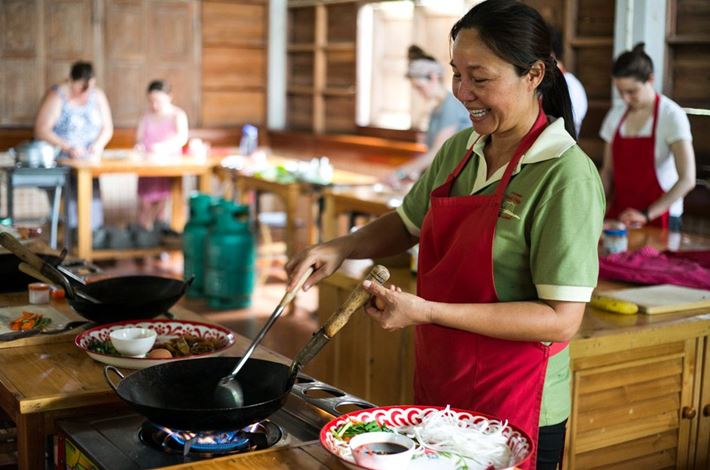
Learn how to make Thailand’s top rice dishes during a private cooking lesson
If you’re keen to enjoy the sublime flavours of authentic Thai cuisine once you return home after your holiday, it’s worth booking a cooking class with your villa’s professional chef. He or she will be able to teach you the basic flavours and principles involved in Thai cooking, instructing you in the preparation of various dishes. In fact, if you have any particular Thai favourites – including any of the rice dishes listed above – you’ll be able to learn how to make them. Your cooking lesson could even include a trip to the local fresh produce market so you’ll be able to get a sense of all the essential herbs and spices you’ll need to stock up on.
If you want to enjoy the authentic flavours of Thailand, here are a few top tips on how to eat like a local:
- Go where the locals go. If you see a group of Thai people queueing to eat at a particular restaurant or street food stall, you know it’s going to be good.
- Many food vendors will ask if you like your food seasoned to be spicy. If you answer yes, they probably won’t make it that spicy anyway. However, by asking for it ‘Thai-style’ you’re much more likely to get the authentic heat of the dish.
- It can be worth learning a few Thai phrases so you’re able to communicate with street food vendors. That way, they’ll be able to season your dish so it’s served exactly how you like it.
SHARE THIS ARTICLE
Leave a Comment
RELATED STORIES
In addition to its plethora of tasty noodle, rice and curry dishes, Thailand’s flavoursome soups are also well worth sampling.
We’ve rounded up a selection of mouth-watering recipes for you to test out the next time you have a barbecue at your luxury private villa in Thailand
If you’re staying in one of Thailand’s upscale private villas, you can indulge in a selection of seafood treats throughout your stay
There are only so many times you can roll off the beach and into a dinner of burgers and Bintang. Time to get creative with your culinary explorations and indulge in some of Bali’s lesser-known local fare.
